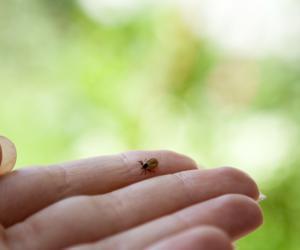Borrelia burgdorferi: The Bug Responsible for Lyme Disease

Borrelia burgdorferi is a gram-negative bacterium, which is the causative organism of Lyme disease. It is most commonly found in North America and Europe. Lyme disease is a zoonotic vector-borne disease. A zoonotic disease is a disease that can be transmitted from animals to humans and vice-versa.
Borrelia burgdorferi are spirochetes and are spiral-shaped organisms. These bacteria are very active with a flexible and pliable body that moves with the help of a complex organelle called as the flagellum.
One bacterium has about seven to eleven internal flagella or endoflagella. These flagella together form a structure called as an axial filament. The axial filament is the structure that is responsible for the snake-like movement of these spirochetes. This snake-like movement of the spirochetes helps the bacteria to bore themselves through the tissues very easily.
Complicated method of replication
Each bacterium has approximately about 1,738 genes. They also own a very complicated and sophisticated replicating system, which is why it is very difficult to spot these bacteria.
Before the ticks inject the bacteria, they inject a substance into the human blood that activates the immune system. This allows the bacteria to get a very strong foothold. After the spirochetes are released into the blood, they secrete enzymes that help to replicate and infect the host cells.
These spirochetes tend to hide in areas that are not under the surveillance of the immune system, such as under scar tissues, eyes, and deep under the joints. Because of how they replicate, Borrelia burgdorferi spirochetes are very hard to spot.
Another tactic of these spirochetes is that they are able to change into a dormant cyst. Dormant cysts can evade the immune system as well as resist an antibiotic therapy. Dormant cysts are inactive cysts that allow the bacteria to hide its DNA for months, years, or even decades until there is a signal from the immune system to release the cells, and so they begin to replicate again and produce more bacteria.
The vector: A tiny black-legged tick
The bacterium Borrelia burgdorferi is transmitted to humans via tiny black-legged ticks. The disease is spread through the bite of an infected tick. These ticks can attach to any part of the body, but most commonly attached to the groin, arm pits, and scalp. In most cases, the tick should be attached on to the body for at least 36 to 48 hours for the bacteria to be transmitted to the human blood.
Most humans are infected by the bite of immature ticks called as nymphs. Nymphs are so tiny, and therefore, difficult to see. They feed on human blood during spring and summer. Even if these nymphs are attached to your body, you will not feel or see them as they are so tiny.
Adult ticks can also transmit the disease, but they are much larger and more likely to be discovered and removed before they have had time to transmit the bacteria.
















